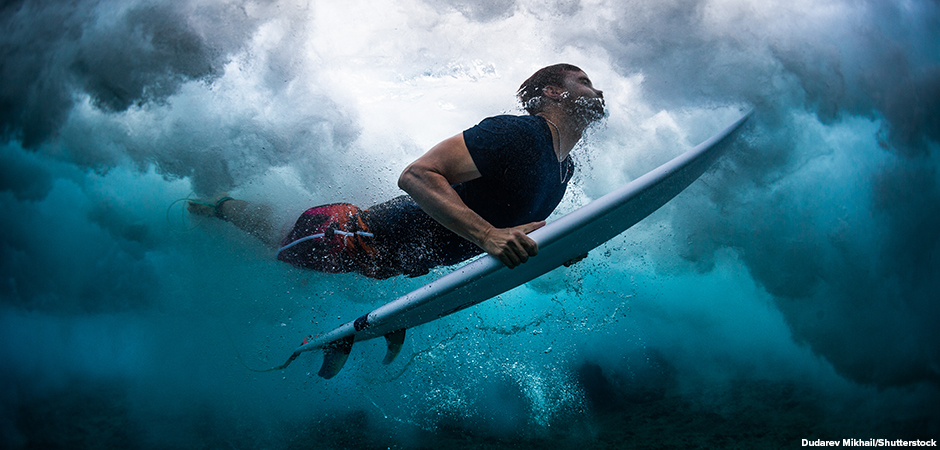
As we celebrate the Asian American, Native Hawaiian, and Pacific Islander (AANHPI) community during the month of May, btw remembers the father of modern surfing. Hawaiian legend Duke Kahanamoku was also a five-time Olympic medalist in swimming.
Duke Kahanamoku’s Early Life
Duke Paoa Kahinu Mokoe Hulikohola Kahanamoku was born in Honolulu in 1890 when Hawaii was a kingdom ruled by King David Kalākaua. The first of nine children, Kahanamoku was nicknamed “The Duke,” although his family called him Paoa. From the time he was young, Kahanamoku was constantly in the water, swimming, diving, surfing, and exploring. He dropped out of high school to help his family financially. He sold newspapers, hauled ice, and shined shoes. As he got older, he began winning competitions in the water. Kahanamoku’s two passions were swimming and surfing.
Swimming and Surfing Achievements
At 21, in his first swimming race in Honolulu Harbor, Kahanamoku broke the world record in the 100-yard freestyle by 4.6 seconds. However, officials on the mainland with the Amateur Athletic Union (AAU) were in disbelief and questioned the results. Kahanamoku went on to prove himself when he qualified for the 1912 Olympics in Stockholm, Sweden. There, he won a gold medal for the 100-meter freestyle race and a silver medal as a member of the U.S. men’s freestyle relay team.

Kahanamoku is credited with developing the flutter kick, which mostly replaced the scissors kick. He began giving swimming exhibitions all over the world and teaching his powerful “Kahanamoku Kick” technique for the freestyle stroke. But he was better known for surfing—an ancient art that was not well known outside the Hawaiian Islands. In 1914, Kahanamoku introduced surfing to the east and west coasts of the United States and then to Australia and New Zealand. He used homemade wooden surfboards. His favorite was a koa wood board that measured 16 feet long and weighed 114 pounds. Today, a typical surfboard weighs 13 to 20 pounds.
Kahanamoku continued to popularize both surfing and swimming. Although the 1916 Olympics were cancelled because of World War I, Kahanamoku won two gold medals in swimming at the 1920 Olympics in Antwerp, Belgium, and a silver medal at the 1924 Paris Olympics.
Life After Competition
Kahanamoku later moved to California where he starred in about a dozen films. He also became a lifeguard at Newport Beach. In June 1925, Kahanamoku used his surfboard to rescue eight fishermen from a capsized boat. He swam back and forth on his surfboard from the beach to the sinking vessel. He also recovered bodies of men who drowned.
After moving back to Honolulu, Kahanamoku was appointed sheriff in 1934. He was re-elected 13 times until the position was eliminated in 1960. In 1965 he was inducted into the International Swimming Hall of Fame. The following year, he was inducted into the Surfing Hall of Fame. He died of a heart attack at the age of 77 in 1968. After his death, he was inducted into the U.S. Olympic Hall of Fame. In 1999, Kahanamoku was named “Surfer of the Century” by Surfer Magazine. Large statues in Hawaii and Australia commemorate his life and contributions.
